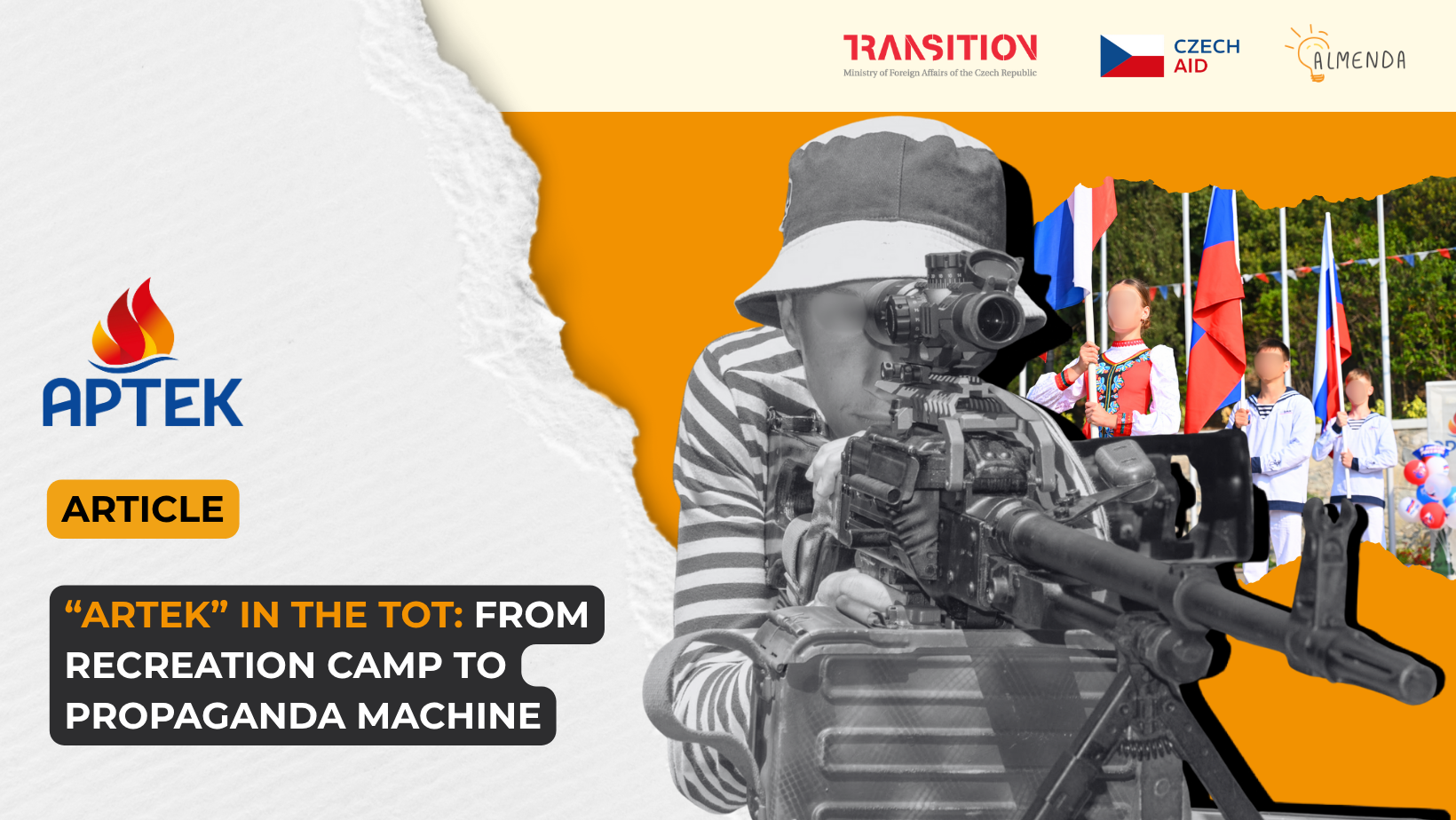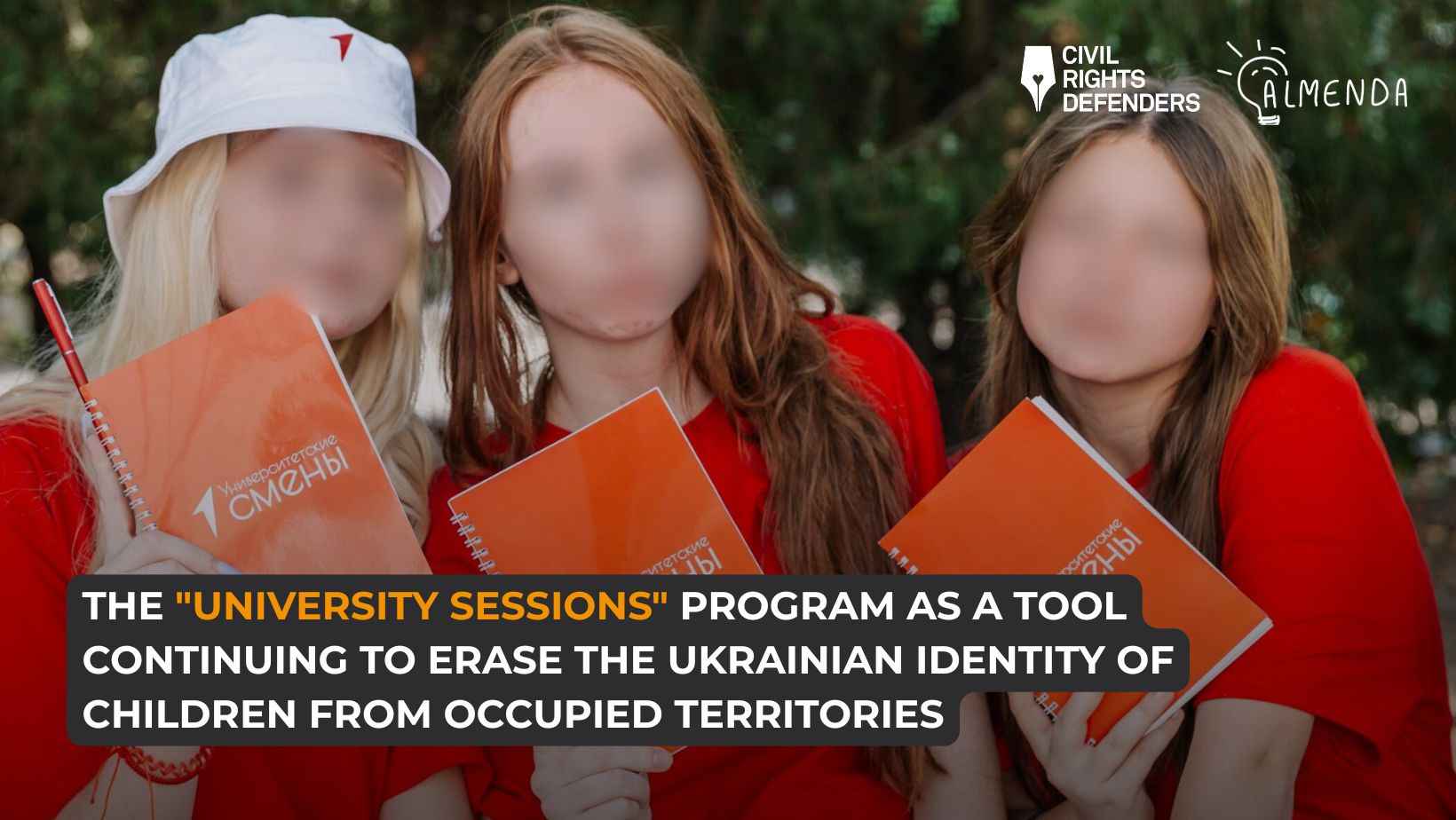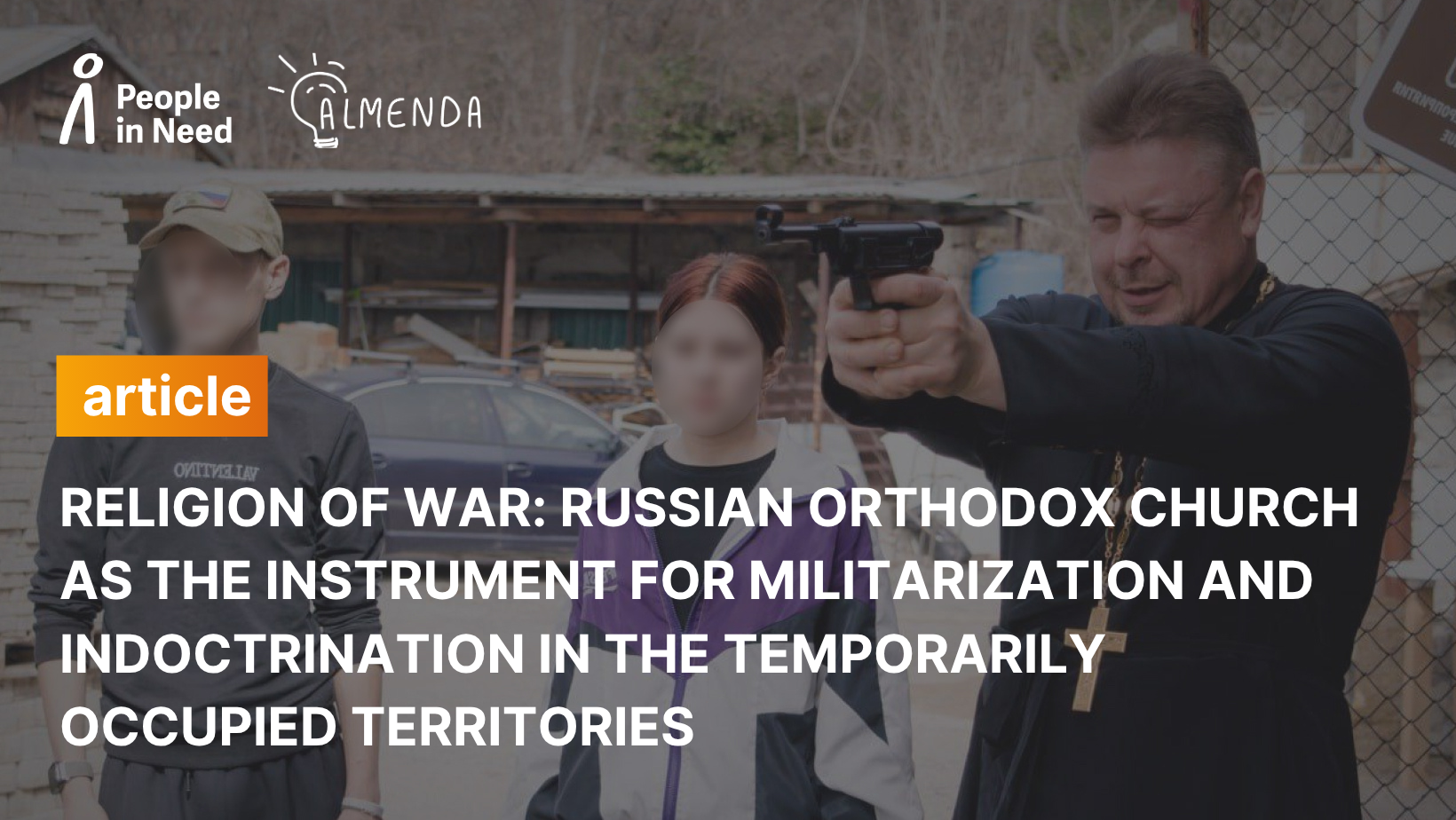

Schools in evacuation – invisible schools that are the only ones that continue to keep in touch with children in the occupation


Valeria Kuberska, legal analyst
According to the occupation authorities of the temporarily occupied territory of Kherson region, on September 1, 2023, more than 21,000 children went to school in these territories, and last year – 18,000 students. According to their information, as of September 1, 2023, there are a total of 92 schools functioning in the temporarily occupied territory of Kherson region. In the temporarily occupied territory of Zaporizhzhia region, the occupation authorities report an even greater number of students and schools – 40,000 children, including 3,300 first graders, and 172 schools.
In other words, in according to the information from the occupation authorities, there are 61,000 students in the newly occupied territories, and the educational process takes place in 264 schools.
We cannot vouch for credibility of these facts, but even if the number is lower, it is still impressive.
Unfortunately, all these children are being exposed to Russian propaganda on a daily basis, which is aimed at indoctrinating children and destroying any Ukrainian studies component.
And the only way to keep in touch with these children and counter this propaganda is Ukrainian distance education.
Understanding this, Russia controls in every possible way whether children study in Ukrainian schools and, through coercion and threats to parents, drags children to occupied schools, where classes are held offline, which makes it difficult, and sometimes even impossible, for children to obtain parallel education in Ukrainian schools.
So, what is the situation in Ukraine with Ukrainian schools in evacuation, which left the occupation, but have contacts with parents and children who remained in the occupation? How do these schools operate, and, most importantly, how do teachers work?
To find out, we talked to a teacher of a distance school, who left the occupied city in Zaporizhzhia region, and collected the statistical information, as well as regulatory framework.
Ukrainian statistics.
According to the data provided to us by the Ministry of Education of Ukraine after our request, this is the situation in the temporarily occupied territories of Zaporizhzhia region:
- After Russia’s full-scale invasion, not a single institution of general secondary education in the temporarily occupied territories provides educational services according to the state standards of education of Ukraine.
- After the full-scale invasion, 36 institutions of general secondary education agreed to cooperate with the aggressor state and carry out educational activities according to the state standards of education of the Russian Federation.
- There are 203 institutions of general secondary education that are registered in the temporarily occupied territory of Zaporizhzhia region but conduct educational activities remotely according to the state education standards of Ukraine.
As for the temporarily occupied territory of Kherson region, we were provided the following information:
- 230 institutions of general secondary education remained in the temporarily occupied territory of Kherson region.
- Regarding the number of institutions of general secondary education located in the temporarily occupied territory of Kherson region that agreed to cooperate with the aggressor country and carry out educational activities according to the education standards of the Russian Federation – the Department of Education and Science of Kherson Regional Military Administration does not have reliable information.
- 65 institutions of general secondary education, which are registered in the temporarily occupied territory of Kherson region, conduct educational activities remotely according to the state standards of Ukraine.
In other words, according to the information, provided by the Ministry of Education and Science, 268 institutions of general secondary education only from the newly occupied territories of Kherson and Zaporizhzhia regions are working in evacuation remotely.
The number is not small, and it is only for the newly occupied territory. However, is there a special legal act, resolution or orders of the Ministry of Education and Science regarding the operation of these institutions? And how do teachers of such schools work?
Regulatory framework for the operation of schools in evacuation?
As of now, the Regulation on the distance form of obtaining a complete general secondary education, approved by the Order of the Ministry of Education and Science No. 1115 dated September 08, 2020 (as amended on April 11, 2023), is currently in force, which states that the system-technical support for the distance learning at the educational institution should be provided by the founder of the educational institution (hardware, software of general and special purpose, which must be licensed or developed on open source software products; technical/service support to ensure continuous operation of the distance learning platform, etc.).
In view of the teacher’s interview, we understand that not all of these points are being implemented in practice.
According to the information, provided by the teacher, who carries out the educational activities in evacuation, in 2023-2024 academic year, the management of the educational institution recommends using the following acts in the work:
- Instructional and methodological recommendations for teaching subjects in general secondary education institutions in the 2023/2024 academic year , prepared jointly with the State Scientific Institution “Institute of Education Content Modernization”.
- Instructional and methodological recommensations regarding the organization of the educational process and the teaching of educational subjects in general secondary education institutions in the 2022/2023 academic year (letter of the Ministry of Education and Science of Ukraine, dated August 19, 2022, No. 1/9530-22).
- methodological recommendations on certain issues related to obtaining general secondary education in the conditions of martial law in Ukraine, approved by the Order of the Ministry of Education and Science of Ukraine, dated May 15, 2023, No. 563.
All these documents detail the process of education under martial law, the development of a calendar-thematic plan, and the evaluation of education seekers. At the same time, the Order No. 563 is aimed exclusively at children who are forced to stay abroad, while there is almost no mention of children who remained in the temporarily occupied territories.
Similarly, in other acts there are no specifics regarding the studies of the persons, who are under occupation. Having analyzed this, we can come to the conclusion that there is a need to create the unified document, which would clearly regulate the procedure of providing education to children in the occupation.
And what do teachers of the evacuated schools, who continue to teach children in the occupation, say?
Regarding the working schedules of teachers and resources
According to the regulatory acts, with the remote form of operation of the educational institution, synchronous teaching of lessons is at least 30%. And in some schools, during the previous last academic year, synchronous teaching was 50%, according to the decisions of the teachers of these institutions.
In this academic year, a decision was made to conduct 100% of lessons synchronously.
In this way, the school day is about 7 hours. At the same time, a lesson in ZOOM lasts 30 minutes, and additionally, students must work independently for 15 minutes. And in the evening, there are also consultations for children from the temporarily occupied territories and for those who study abroad.
We do not have an on-line platform for distance learning, therefore we use Google classrooms, and that’s on behalf of students, because version for teachers should be paid for. Internet, power banks, fiber optic connection – all that at teachers’ own expense.
Regarding salary
“The pay for our work – work of teachers whose institutions have left the temporarily occupied territories and work remotely – is lower.
A teacher’s salary consists of many components: the teacher’s rate itself is small, but a percentage is added to it for the category (senior teacher, teacher-methodologist), for seniority (for how long one works), 20% for classroom management. Also, a percentage for prestige is paid from the local budget – from 5% to 20%. So, we have the lowest percentage of payments form the local budget – 5%. In other words, in Ukraine it is prestigious to work in such schools, as mine, which left the occupied territory. And we, teachers, feel it very much.”
And last year we had a situation, when payment of salary was delayed and paid in the next one already, with a 30% bonus. However, later we were informed that due to the fact that the administration had not transferred anything to military taxes yet, they took away 25% of the bonus and left 5%. I thought that it was impossible to take the salary from us without the employee’s permission, but turned out it was possible.
And what about the salary of collaborating teachers, how much does Russia pay?
“I know that in my occupied city, the principal received 100,000 Rubles last year. Teachers receive about 40,000 Rubles depending on the category. For better understanding, the exchange rate was 1:1 or 1:2”.
Conclusions.
During the interview with the teacher, the problematic issues faced by almost every teacher in evacuation were highlighted. This issue – the operation of schools that are under evacuation, the fair payment for the work of teachers of evacuated schools – needs even deeper study.
But it is already clear that it makes sense to create a separate regulatory act, which could regulate the operation of institutions of general secondary education that were evacuated due to the occupation and were forced to implement distance learning. Since a number of questions remain open, despite the available explanations of the Ministry of Education and Science of Ukraine.
Thus, it would be appropriate to additionally clarify how teachers are provided with the necessary equipment and licensed software for teaching and to create an effective mechanism for providing them with this, to establish fair salaries for teachers, who teach children in such difficult conditions as evacuation, as well as clarify the questions that arise for teachers regarding teaching children who are in the occupied territories.
The article was prepared by the Centre of civil education «Almenda» as a part of the project “Steps towards each other: Approaching the re-integration of youth from the temporarily occupied territories”. The project is implemented with the financial support of the Ministry of Foreign Affairs of the Czech Republic as a part of the Transition Promotion Program. The views, represented in this material belong to the authors and do not reflect the official position of the Ministry of Foreign Affairs of the Czech Republic



